FYI
Little Known facts and then some to thrill your friends with
State Bird: native redbird, commonly known as the Kentucky cardinal (Richmondena cardinalis).
| Cardinals may form winter flocks of 60-70 birds. | |
| Males care for the first brood while the females are incubating a second clutch in a new nest. | |
| Females usually sing after males establish territory but before nesting starts. | |
| Females dull colors help camouflage them from predators. Males bright colors help attract a mate. | |
| Males are duller in winter. | |
| Male cardinals vigorously defend their territory. They have been known to attack their reflections in mirrors, windows and chrome. Sometimes they will even attack small red objects they mistake for other males. | |
| Most small birds only live for a year or two. One cardinal was caught almost 16 years after it was initially banded. | |
| Legend has it the brightly-colored male inspired the name for this bird, reminding people of cardinals in the Catholic Church who wore bright, red robes. Seven states have chosen the cardinal as their state bird: Illinois, Indiana, Kentucky, North Carolina, Ohio, Virginia and West Virginia. |
State Butterfly: viceroy.
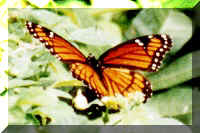
State Fish: Kentucky bass.
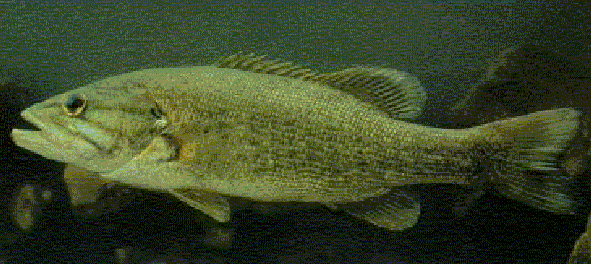
| State Flower: The goldenrod (genus Solidago) is the official state flower of Kentucky |
 |
Kentucky may be the only state that would consider adopting a grass as the state flower. After all, Kentucky is nicknamed the Bluegrass State. In fact, bluegrass was adopted as the state flower in 1911! But many people objected that bluegrass represented only Kentucky’s Bluegrass section.
The trumpet vine was once considered Kentucky’s unofficial state flower. The United States War Department used the trumpet vine as a symbol of the Kentucky militia.
But the State Federation of Women’s Clubs agitated for an “appropriate” state flower in 1921. What candidate could be more obvious than the goldenrod? It grew across Kentucky. Better yet, it was depicted on the state flag, which had been adopted in 1918!
The War Department insisted that the trumpet vine remain Kentucky’s floral emblem. Besides, it had already awarded the goldenrod to California!
But Kentuckians weren’t about to let the federal government tell them what their state flower should be. They adopted the goldenrod on March 16, 1926.
A few years later, there was another effort to adopt bluegrass as the state flower. Some people pointed out that goldenrod wasn’t very distinctive, since it was common in most states. The bluegrass bill passed the House, but not the Senate.
In 1948 and 1952, two men tried to promote the dogwood blossom as Kentucky’s state flower. A campaign for the redbud was launched in 1953. Garden club members supported the redbud. A redbud bill was passed by the House, but it died in the Senate.
The goldenrod continues in its tenuous reign as Kentucky’s state flower. As one newspaper reported, “Kentucky has a State flower, but it is probably just what you think it isn’t.”
State Fossil: brachiopod.
Brachiopod shells are probably the most commonly collected fossil in Kentucky. Brachiopods had two shells and lived attached to the sea bottom or some object on the sea bottom.
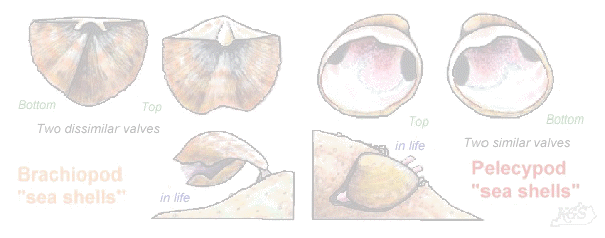
Although they had two shells or valves, as clams (pelecypods) have, all similarity ends there. The internal structure of brachiopods is entirely different from that of the clam. Brachiopods still exist today but are very rarely found as seashells on the beach. However, in ancient Kentucky, they were very common and far outnumbered the fossil clams and snails living in the sea. Brachiopods can be found in Ordovician, Silurian, Devonian, Mississippian, and Pennsylvanian rocks in Kentucky.
State Gemstone: fresh-water pearl.
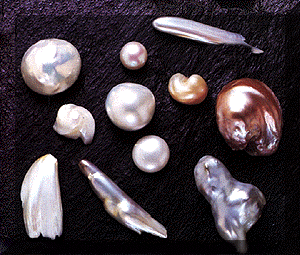 |
On July 15, 1986, Kentucky adopted the freshwater pearl and the brachiopod as its official state gemstone and fossil. Here’s a copy of the portion of the bill relating to the pearl: |
WHEREAS, it being common practice for other states to designate state gemstones; and
WHEREAS, American fresh-water pearls have been treasured by persons of culture for many centuries; and
WHEREAS, the Commonwealth of Kentucky is blessed with a great abundance of the treasured fresh-water pearl; and
WHEREAS, the crown jewels of many countries are adorned with Kentucky fresh-water pearls; and
WHEREAS, this valued gemstone has carried Kentucky’s name around the globe . . .
Kentucky’s freshwater pearls are taken from mussels, which are related to clams and oysters. Most mussels commercially harvested in the state are taken from Kentucky and Barkley lakes in western Kentucky. Virtually all of Kentucky’s legally harvested mussels are processed by Tennessee Shell Company in Camden, Tennessee.
State Horse: thoroughbred.
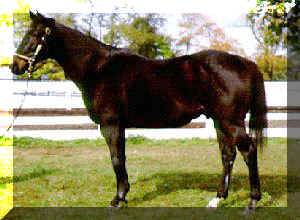
State Mineral: coal.
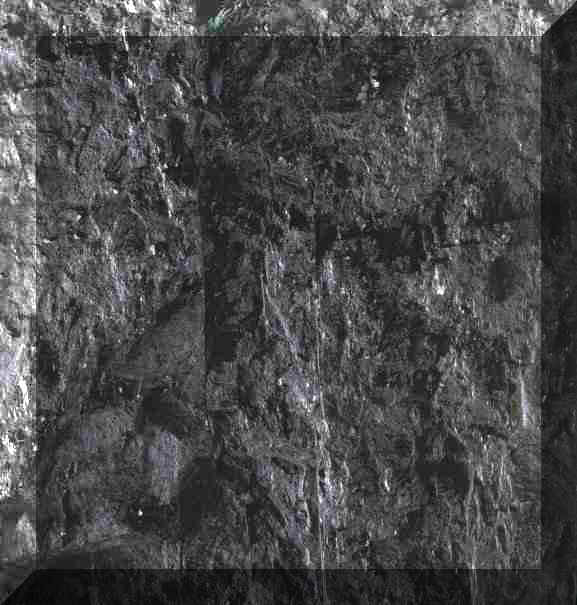
State Soil: Crider soil series.
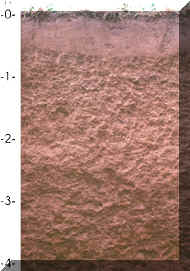
State Bluegrass Song
"Blue Moon of
Kentucky"
Year adopted:1988
State Song: "My Old Kentucky Home, Good-Night!,"
by Stephen Foster.
The sun shines bright on my old Kentucky
home,
‘Tis summer, the people are gay;
The corn top’s ripe and the meadow’s in the bloom,
While the birds make music all the day.
The young folks roll on the little cabin
floor,
All merry, all happy and bright;
By ’n by hard times comes a-knockin’ at the door,
Then my old Kentucky home, good-night!
Weep no more, my lady!
Oh weep no more today.
We will sing one song for my old Kentucky home,
For my old Kentucky home, far away.
Kentucky's State Song
"My Old Kentucky Home"
Stephen Collins Foster -1853
State Tree: tulip poplar (formerly the Kentucky coffee tree).
| The Tulip Poplar (Liriodendron tulipifera), also
known as Yellow Poplar or Tuliptree, is one of the tallest (up to 120 feet)
and most distinctive eastern North American hardwood trees. Liriodendron
translates from the Greek as "lily tree," perhaps because the flowers
resemble lilies. Tulipifera meaning "tulip-bearing," refers to the
resemblance the flowers have to tulips. The Tuliptree is actually a very old
tree recorded in fossils as "deciduous Magnolia." The scented, tulip-like, greenish-yellow flowers bloom in mid-Spring. Often the tree does not flower until it reaches maturity of at least 15 years, and even then only sparsely in the uppermost reaches of the tree, making the flowers more difficult to see. Older trees flower heavily and their lowermost branches become pendulous, allowing for visualization of the beautiful flowers up-close. Its fall color is yellow. |
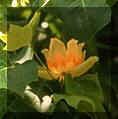 |
State Wild Animal Game Species: gray squirrel
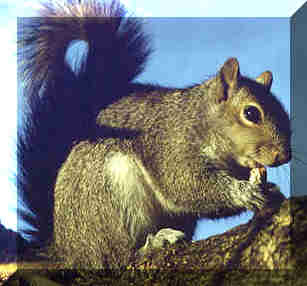 |
The
gray squirrel is an important symbol in the Appalachians. On March 21, 1968,
it was adopted as the official “wild animal game species” of Kentucky, where
it was promoted by the League of Kentucky Sportsmen. Squirrels are very popular with children and hunters alike. As many as two million squirrels may be shot in Kentucky each year. Before eastern forests were heavily logged and settled, population explosions sometimes sent fantastic hordes of squirrels scrambling in search of food and living space. |
Kentucky State Seal
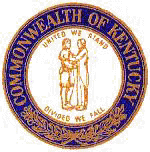
 Kentucky Flag
Kentucky Flag
Named in March, 2000 the "Official State Botanical Garden for the Commonwealth of Kentucky," the Arboretum is 100 acres of preserved green space in the heart of Lexington.
To reach the University of Kentucky campus and the Arboretum from I-64 and I-75 north through downtown Lexington, take exit 115 Newtown Pike (992) and go south. Drive 4 miles on Newtown Pike. Turn left on West Main Street, go through 2 major intersections: Jefferson St., Broadway; 3rd major intersection, turn right (Upper Street). Drive through the entire campus as you drive 2.5 miles south on Upper St.. Turn left on Alumni Drive (just after you pass the Gluck Equine Center). On Alumni, you will go by the Senior Citizens Center and Commonwealth Stadium on the left. Enter the Arboretum to the right off Alumni Drive.
To reach the UK campus and the Arboretum from I-75 south, take exit 104. Turn left on Richmond Rd. Drive 6 miles. At Man O' War Blvd, turn left. Drive 1 mile. At Alumni Drive (2nd light), turn right. Drive 4 miles. When you cross Tates Creek Road, the rock wall indicates your entrance onto campus. Look for rock wall on left which designates your entrance into the Arboretum.
